Articles
English
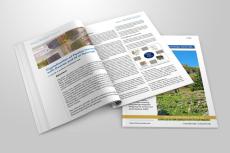
Digitalization of Pipeline Monitoring with Drones and AI at Thyssengas
Pipeline operators are obliged to regularly monitor their pipeline grid for potential third-party interferences (TPI). They need a reliable, cost-effective method to acquire and analyze aerial images of their pipeline in an automated process. This paper presents the concept of AIMI (Airborne Intelligent Monitoring of Infrastructures), a project…
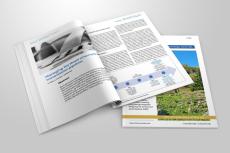
Managing the Threat of Hard Spots in Gas Transmission Pipelines
Hard spots are a type of threat many operators are managing as part of their integrity management plan. Hard spots are areas on the pipeline that are more susceptible to cracking or could pose an integrity concern in combination with other threats. The United States gas transmission regulation, 49 CFR 192.3, defines a hard spot as “an area on…
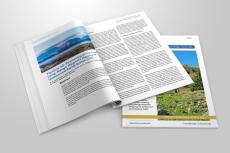
Pipeline 3D-Positioning at river crossing: Long-Range Magnetic Mapping via Unmanned Aerial System (UAS)
Pipeline networks traverse modern societies' national territories and can be located in areas difficult to access, such as river crossings, making maintenance logistically challenging and potentially dangerous for field personnel. In order to resolve this problem, Skipper NDT has developed an unmanned aerial system (UAS) for magnetic mapping which…
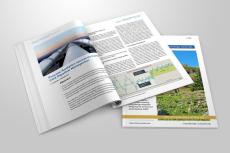
Process Analytics secures the Quality of CO2 Pipeline Management
CO2 is a fundamental building block in the global decarbonization process. In order to successfully develop the individual processes for the separation of CO2 in the coming years, a reliable transport network, for example via pipelines, is a key issue.Here, process analytics plays an important role here to efficiently monitor and control the…
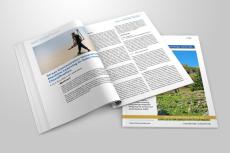
Stress Concentration Tomography with Machine Learning for Defect Severity Classification
Defect severity classification holds significant importance within industries that prioritize quality control. This study proposes a novel approach that applies machine learning with Stress Concentration Tomography (SCT) to effectively categorize defects’ severity. Through the utilization of machine learning algorithms, the objective is to enhance…
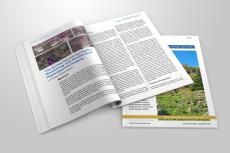
The Arrival Oil and Gas Pipeline Monitoring with Satellite-Based Hyperspectral Imaging
Hyperspectral imagery (HSI) began in the 1980s and has been used by the U.S. government for years, but it just recently became available for commercial use. This technology has a vast range of potential applications, with oil and gas pipeline monitoring being one of the most prominent examples. HSI enables unparalleled daily global pipeline leak…

Editorial: Greetings to all our esteemed readers
As managing directors of the EITEP Institute, it is our pleasure to welcome you to our 10th anniversary edition of the Pipeline Technology Journal (ptj). Since its first issue in 2013, our journal has grown into a widely recognized and respected source of information and analysis for pipeline professionals.
As we mark this milestone, we want to…
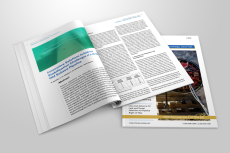
Innovative Solutions to Address Stabilization Challenges of a 48-Year Old Subsea Pipeline
Subsea pipelines are externally concrete coated to provide vertical and lateral stability. The loss of concrete can lead to floatation or lateral movement on the seabed. If seabed is hard/rocky, then lateral rubbing may lead to wall thinning at 6 o'clock and can result in a leak or flattening at the bottom affecting ovality. This paper presents…
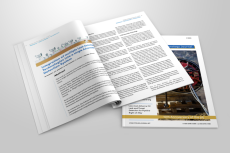
Integration of multiple Leak Detection Technologies into a single Advanced Leak Detection System
This work is centered on the integration of different Leak Detection Technologies into a single platform for a better management of Pipeline Integrity Monitoring issues.
Leak detection methods covered in this paper are based on Advanced-Negative Pressure Wave, Mass-Balance, Acoustic-Noise, and other predictive techniques based on data processing…
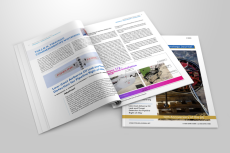
Low-Cost Airborne Oil Leak and Threat Detection for Pipeline Right-of-Way
For years, pipeline operators have relied on human observers flying at low altitude to perform visual inspection of their ROW, without any automatic documentation or detection system. This paper presents the first real-life results of a test campaign performed by Flyscan Systems, integrating detection algorithms developed by Enbridge, over ROWs of…
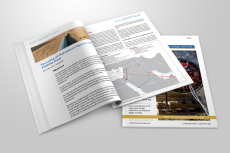
Security of Petroleum Pipelines in the Middle East
Oil pipelines in the Middle East have historically focused on the security of supply and export rather than on the economic benefits of having cheaper oil transport. Looking at the historical record of these pipelines, one could easily conclude that the objective of oil supply security sought by Middle-Eastern producers has not been met through…
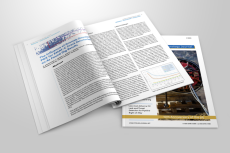
The Influence of Anomaly Dimensions on POX for EMAT-C Crack Detection based on As Found Dig Results
In the context of repurposing of natural gas transmission pipelines to Hydrogen service the sensitivity of inspection systems with a focus on POX is frequently discussed. Often an increase of crack growth rate da/dN and a reduction in pipe steel toughness require a reduction of minimum remaining anomaly dimensions, in order to satisfy economically…
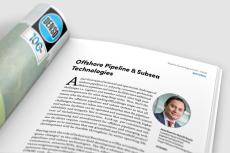
Editorial 1-2023
Apart from typical technical and operational challenges of onshore pipelines i.e. 3rd party, corrosions, geohazards; offshore pipelines and subsea facilities have additional challenges i.e. logistics and weather-related, ultra-high pressure/temperature for ultra-deep/deep water. Thus, that’s the reason why the front-end loading (FEL)/design stages…
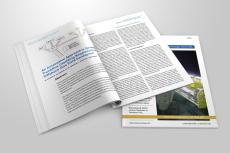
Saudi Aramco
Subsea pipelines such as flowlines, trunklines etc. are an integral part of all offshore field developments. Sour service conditions as encountered by production pipelines of gas fields require CRA clad pipe due to high risk of localized corrosion initiation and penetration rate in carbon steel. This paper presents an innovative approach to…
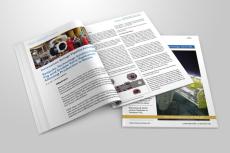
T.D.Williamson
Before the operator of a gas export pipeline offshore Asia could isolate the line and replace leaking pig trap valves on their platform and perform in-line inspection (ILI), they had to remove a serious obstacle: a cleaning pig that had stalled just beyond the pig launcher. Because there is no standard tool for recovering a stalled pig, at least…
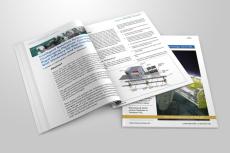
ROSEN Group
Since the introduction of in-line inspection tools (ILI) more than 50 years ago, there have always been pipelines that were considered unpiggable. Typically, it is a combination of various circumstances relating to pipeline design, operating conditions, and/or characteristics of the medium that prevents a successful in-line inspection using…
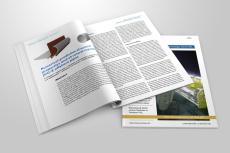
University of Thessaly
The present paper presents the application of advanced finite element tools to predict the influence of cold-forming on material properties and collapse resistance of steel JCO-E pipes. Results are obtained for a thick-walled 30-inch-diameter pipe, corresponding to diameter-to-thickness ratio value less than 20. The numerical simulations are…
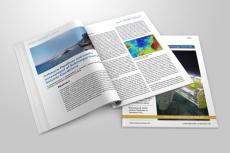
National Technical University of Athens
Depending on the prevailing bathymetrical and geotechnical conditions, the integrity of offshore pipelines is threatened by potential slope instabilities that occur at the seabed or at the bottom of lakes. In addition, submarine slides are more frequent in seismic regions. The instability of onshore slopes under seismic conditions is undoubtedly a…
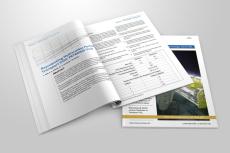
PETRONAS
PETRONAS is considering pipeline repurpose option for one of its CCS projects in Malaysia. One of the opportunities identified is to repurpose existing gas export pipelines, 24in and 30in with combined distance of 200km from offshore to onshore. Existing technical frameworks from available standard and internal resources for pipeline repurpose…
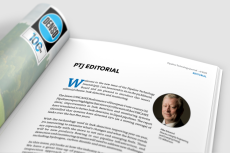
Editorial 4-2022
Welcome to the new issue of the Pipeline Technology Journal (ptj). I am honoured to sit on the ptj Editorial Board and am pleased to introduce this issue’s editorial theme: leak detection and monitoring.
The latest CONCAWE Performance of European Cross-country Oil Pipelines report (https://www.concawe.eu/) highlights that since 1971 (the start of…
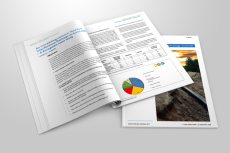
OVERPIPE
Encroachments on buried HP Gas pipelines represent 50% of accidents on pipelines world-wide. The consequences for pipeline owners can be critical, resulting in fatalities and injuries, but also economic cost: shutdown of refineries, damage to the environment, etc… This is a huge issue for both types of pipelines. For older existing pipelines…
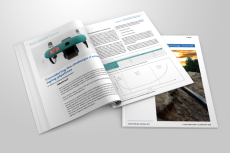
Atmos International
External factors such as global supply chain challenges, the push for Net Zero and an ongoing introduction of new pipeline regulations have raised concerns about the integrity of aging pipelines. Aging pipelines carry their own risks which can lead to product leakage, ruptures and explosions if left unaddressed.
This article takes a look at the…
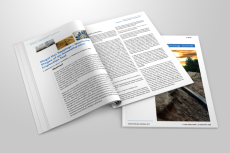
TRAPIL
Product theft has been a major issue for many pipeline operators around the world. We all have in mind the terrible explosion of a gasoline pipeline in the town of Tlahuelilpan, in the Mexican state of Hidalgo. The blast killed at least 137 people and injured dozens more. This story made its mark, but illegal tappings is not an isolated fact.…
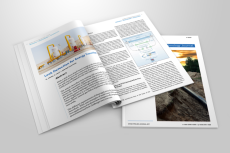
KROHNE
With a shift from fossil-based energy production and consumption to renewable sources also comes a shift for the transportation. To guarantee safe and efficient monitoring of pipelines, leak detection systems (LDS) must be adapted to the new requirements.
The article describes how existing LDS can handle the requirements of energy transition…
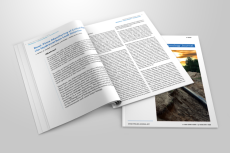
Henkel AG & Co. KGaA
Ensuring the safe operation of flanges is critical to the integrity of piping systems in the oil and gas industry. Given the intense conditions that process equipment often experiences, flanges are subject to a variety of defect mechanisms, such as corrosion, scratching, gouging, pitting, or denting. These defects can lead to flange leakages that…

